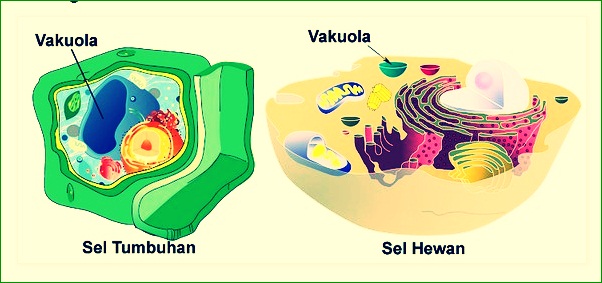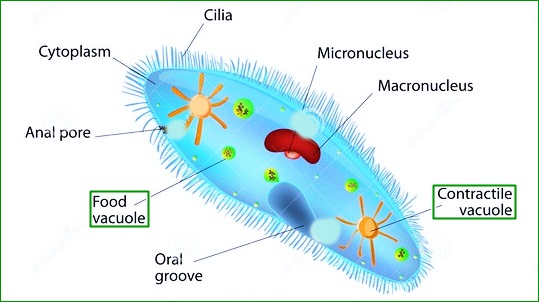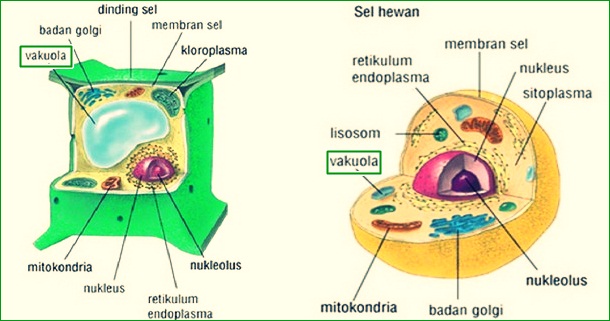Vacuole Function
Vacuole is a part of the cytoplasmic organelle, which has a shape like a liquid which is then covered by a thin membrane or tonoplast. For more details, see our discussion of the Vacuole Function Paper Material including the Definition of, Structure, Place, and Image Below.
Table of Contents
What is Vacuole?
The vacuole is a part of the cytoplasmic organelle, which has a shape like a liquid which is then covered by a thin membrane or tonoplast.
other than that, This vacuole itself can be formed from a collection of fused liquids such as acids, alkaloid, mineral, enzyme, and others.
Each of these substances has its own use but still forms a single unit in the body of animal cells as well as in plant cells.
other than that, These substances also work together in order to produce a more perfect performance.
So it can be said that vacuoles have a fairly important function in organelles in plants and animals.
Read Also : Heart Function
Vacuole Function

If you already know the definition of a vacuole then it's time for you to know what the function of this vacuole is,
Based on the explanation above, vacuoles have many functions and are quite important for animals and plants, but the functions of the two are definitely different.
Then what are the functions of vacuoles in animals and in plants?? Here's the explanation :
a. Functions of Vacuoles in Animals
As discussed above, vacuoles can only be found in certain types of animal cells that have this organelle., which means this vacuole is not owned by all animal cells.
The types of animals that have vacuoles are low unicellular groups, for example: ; protozoan animals.
The vacuole organelles present in animals are divided into: 2 the part that includes vacuoles for movement and pulsation and also vacuoles for food.
Movement vacuole type / Pulse has a role as a collector and can also remove metabolic waste in the form of liquid.
The fluid itself can control the salt and water levels in the body, While the function of the food vacuole is as a place for food reserves or as a place to process food which will then be distributed to all parts of the cell..
Protozoa are animals that have cell organelles, but besides these animals there are also types of fungal animals that have vacuoles as a homeostatic function which is a process that can control osmoregulation, PH, cells and become a storage place for amino acids and so on.
However, in fungal animals, the number of vacuoles they have is greater than in other animals.
b. Functions of Vacuoles in Plants
In contrast to animals, not all types have vacuoles, In plants, vacuole organelles can be found that function as a support for plant life itself.
When viewed from the vacuole owned by this species, the size of the vacuole itself can be seen from the age of the plant because the older the plant, the larger the size of the vacuole in it and vice versa., when the plant is still young then the size of the vacuole is usually still small.
The function of the vacuole in plants is to become a container for the accumulation of metabolic waste in the body, for example, sap, which serves as a container for storing food such as mineral salt or sucrose.
other than that, The function of the vacuole is to connect the cytoplasm with the cell wall, which helps the process of entering and leaving substances found in plants so that they can run smoothly and serves as a place for strengthening immature cells. (Young).
Read Also : Functions of Plant Cell Walls
Types of Vacuoles

The vacuole is divided into 2 kind of kind, They are contractile vacuole and food vacuole (non-contractile vacuole). What are contractile vacuoles and non-contractile vacuoles?? .
- Contractile vacuole
Contractile vacuole or more commonly known as pulsating vacuole. The contractile vacuole functions as an osmoregulator, which is to regulate the osmotic value in the cell. - Non-contractile vacuole
Non-contractile vacuole or better known as food vacuole, which functions to digest food which then distributes the results of food digestion throughout the body.
Read Also : Centrosome function
Vacuole Structure

As discussed above, that the vacuole is a cytoplasmic organelle in which it contains fluid and is also bounded by a thin membrane called the tonoplast.
The shape of this vacuole is a liquid in which various substances such as enzymes are dissolved, mineral, asam, lipid, alkaloid, salt and base.
In plant cells, all plant species have vacuoles, which is the older the plant, Then the vacuole formed will also get bigger.
The vacuole itself functions as a place to store food substances in the form of sucrose & garam mineral, Besides that, The vacuole is also a place for storing metabolic waste, like the sap in a rubber rod (plants).
In order for you to better understand the structure of the vacuole in plants, you can look at Fig! other than plants, Vacuoles are also owned by the type of animal protozoa.
The vacuole is a part of the cytoplasmic organelle, which has a shape like a liquid which is then covered by a thin membrane or tonoplast.
On Animals : Movement vacuole type / Pulse has a role as a collector and can also remove metabolic waste in the form of liquid.
On Plants : The function of the vacuole in plants is to become a container for the accumulation of metabolic waste in the body
The shape of this vacuole is a liquid in which various substances such as enzymes are dissolved, mineral, asam, lipid, alkaloid, salt and base.
That's our explanation Material Vacuole Function. Don't forget to always visit our website so that you can get a lot of knowledge.
The post Fungsi Vakuola appeared first on YukSinau.co.id.
